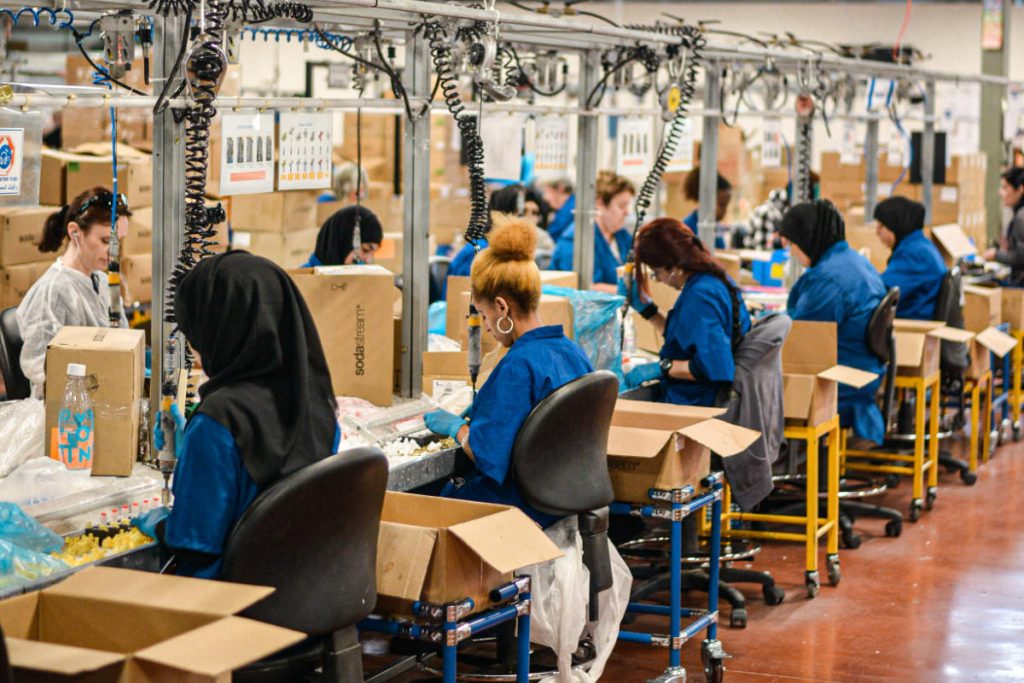Packaging production lines use a variety of materials to make sure items arrive safely in customers’ hands: boxes, tins, tubes – but for a growing number of products, polythene sheeting is required.
Polythene is a super versatile packaging material, used to prevent moisture, dust and dirt from getting through to packaged products.
It comes in several formats, but among the most widely used polythene packaging materials are CFS (centrefold sheeting) and SWS (single wound sheeting).

Centrefold Sheeting Vs Single Wound
Both are made of the same material and are available in a variety of widths and thicknesses.
So, what’s the difference?
Centrefold sheeting comes on a roll, at a specified width.
It’s actually made from a flattened tube of polythene, cut along its length at a certain width, before each half is wound onto a spool. This means that one side of the roll is already sealed, from the folds at the edges.
It can be unrolled at any desired length, and opens up like the middle pages of a newspaper – hence the name, centrefold sheeting.
That fold down the middle makes shrink wrapping easier and speedier for fixed-width items – and means that you’ll have a fully sealed package with just a couple of runs of a heat sealer.
Single wound sheeting also comes on a roll, at a pre-cut width.
It’s also made from the same flattened tube as centrefold sheeting: the difference is, there are no folds, seams or seals already in place. The flattened sides of the tube are cut off, to create two flat sheets of polythene film.
This then needs to be fashioned into a sealed unit – this can be done manually, by rolling the flat sheet into a tube, sealing it along the joint and then sealing the open ends – but it’s more commonly used on automated packaging lines.
When to Use Single Wound Polythene Sheeting
Single wound sheeting is most commonly used in the form, fill and seal automated packaging process.
On a packaging line, a machine dispenses the product to be packed into a section of sheeting. This forms the initial shape of the package. The lengthwise edges are then closed around the product, filling the package. Then, the open ends are closed and sealed.
Although it can be used for manually packaging goods, SWS is best suited to automated high production and major packaging operations.
When to Use Centrefold Polythene Sheeting
Centrefold is more useful for smaller, semi-automated packaging lines, where people and machines work together. Where speed of packaging and space are at a premium, centrefold sheeting is far more efficient, especially if products are a fixed width.
As well as packaging, centrefold polythene sheeting can be used as a pallet top covering. Perforated CFS is easy to tear off to the desired size, to cover pallets before wrapping. This gives excellent protection from dust and dirt, while in transit or in storage.
Alternative – Layflat Tubing
Polythene layflat tubing (or LFT for short) is an alternative to centrefold. As the name implies, it’s a tube, squashed flat and rolled up onto a reel. This can be dispensed at any length – but the width remains fixed.
All polythene films (including SWS and CFS) start as LFT. The tubing is cut into the right kind of sheeting at the manufacturing plant – or wound onto a spool to become LFT packaging.
Read more: find out how to use polythene layflat tubing.
Because LFT is a single continuous extrusion, there’s no seam or seal at the sides, and only the ends are open. All you have to do is pull the required length and insert the product, before cutting and sealing.
This makes it the fastest way to work manually – great for small operations, multiple package length requirements or for limited product runs.
Order Centrefold and Single Wound Sheeting
Premium packaging solutions at great prices. View our whole range of fully recyclable polythene packaging products. Get a quote now, or call us on 01773 820415.


